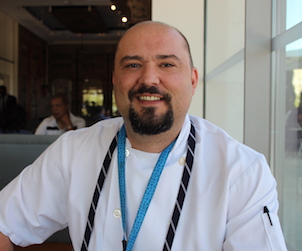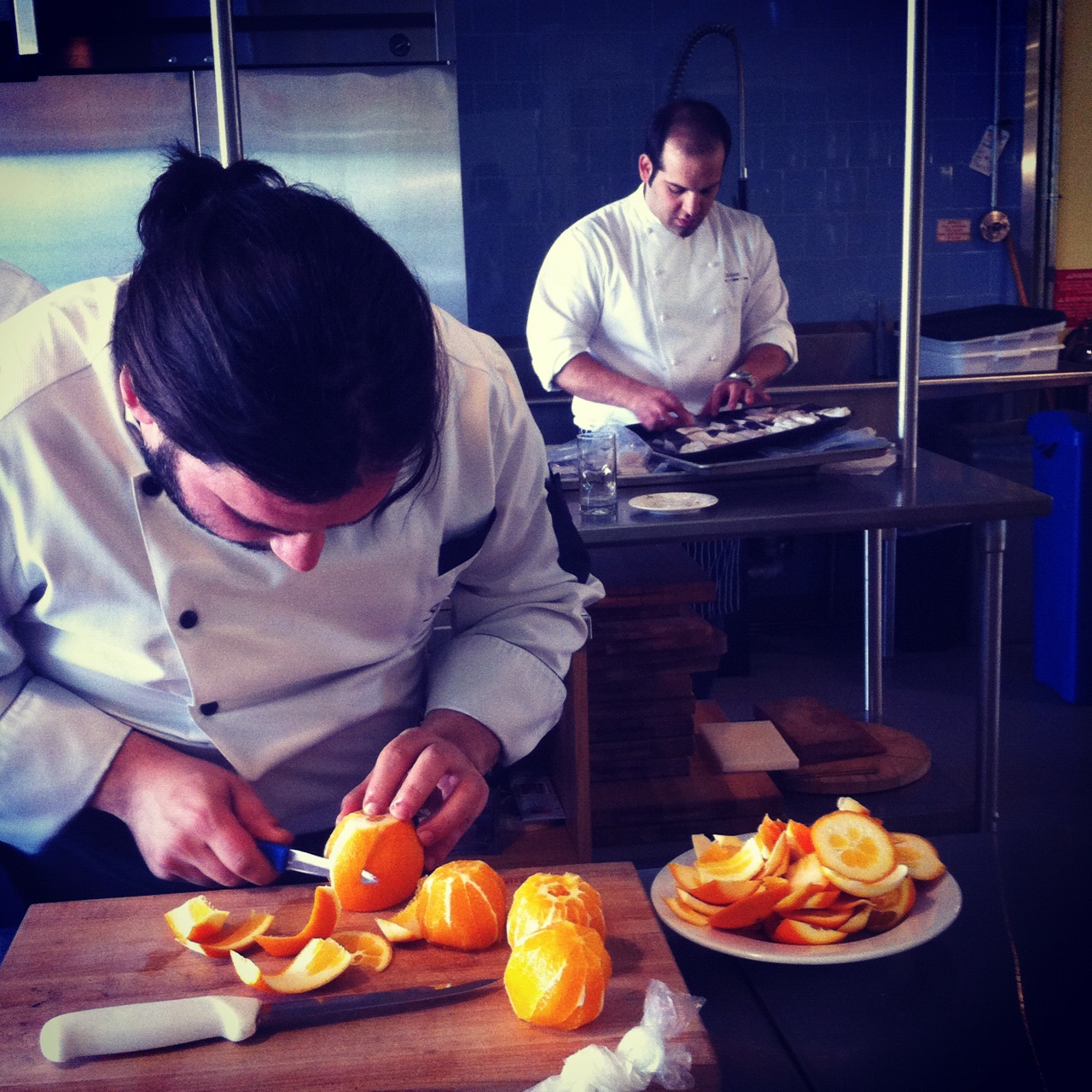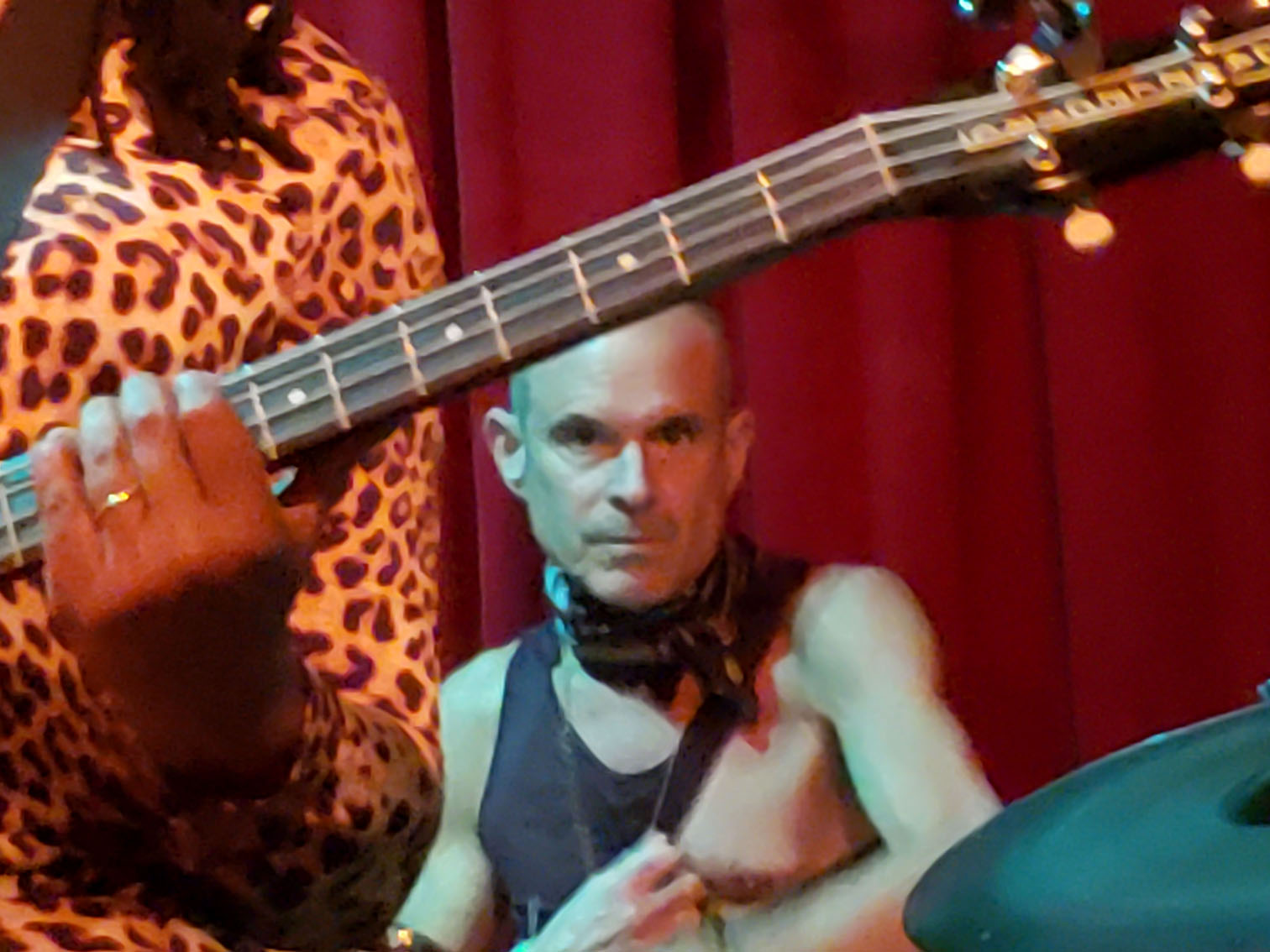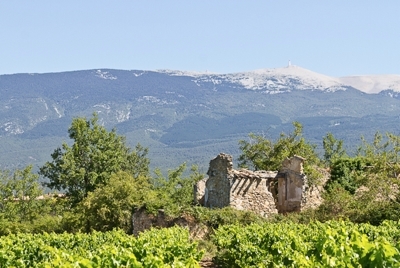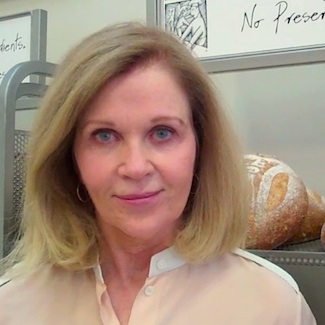Malcolm Jolley talks to chef John Kovac about Middle Eastern museum cuisine.
John Kovac is the chef-de-cuisine at Diwan, the restaurant located in the Aga Khan Museum. Kovac is a 12 year veteran of the McEwan Group, headed by the celebrity chef Mark, which won the catering contract for the museum as of January. With the warm weather and summer holiday season close by, the museum invited me to their campus near Don Mills and Eglinton to see what was going on in the Diwan dining room and patio.
The dining room is decorated with wood panels from a 17th century Damascus home, but it is otherwise modern and airy, with a view of the infinity pools in the garden between the museum and the Ismaili Centre. Diwan is tucked into a corner of the museum, so one can visit for lunch without being admitted to the collection. The restaurant was busy: a diverse crowd of families, older tourists and business people from nearby offices.
Before I met with Kovac, I tried some of the more popular and representative dishes his team is preparing. Here’s what I tried…
Sweet Onion Bhaji
 I had arrived at Diwan at 2:30, so I could catch Chef Kovac after lunch service, around 3pm. I wasn’t very hungry, because I had a sandwich earlier to stave of hunger. I told my server to tell the kitchen that I would only have a few bites of what came out, so when plates came back full of food, it shouldn’t be taken as a judgement. The bhaji’s destroyed this premise! Perfectly cooked, and subtly spiced the combination of white and green onion fritters came with a tangy tamarind sauce.
I had arrived at Diwan at 2:30, so I could catch Chef Kovac after lunch service, around 3pm. I wasn’t very hungry, because I had a sandwich earlier to stave of hunger. I told my server to tell the kitchen that I would only have a few bites of what came out, so when plates came back full of food, it shouldn’t be taken as a judgement. The bhaji’s destroyed this premise! Perfectly cooked, and subtly spiced the combination of white and green onion fritters came with a tangy tamarind sauce.
Morrocan Wedge Salad
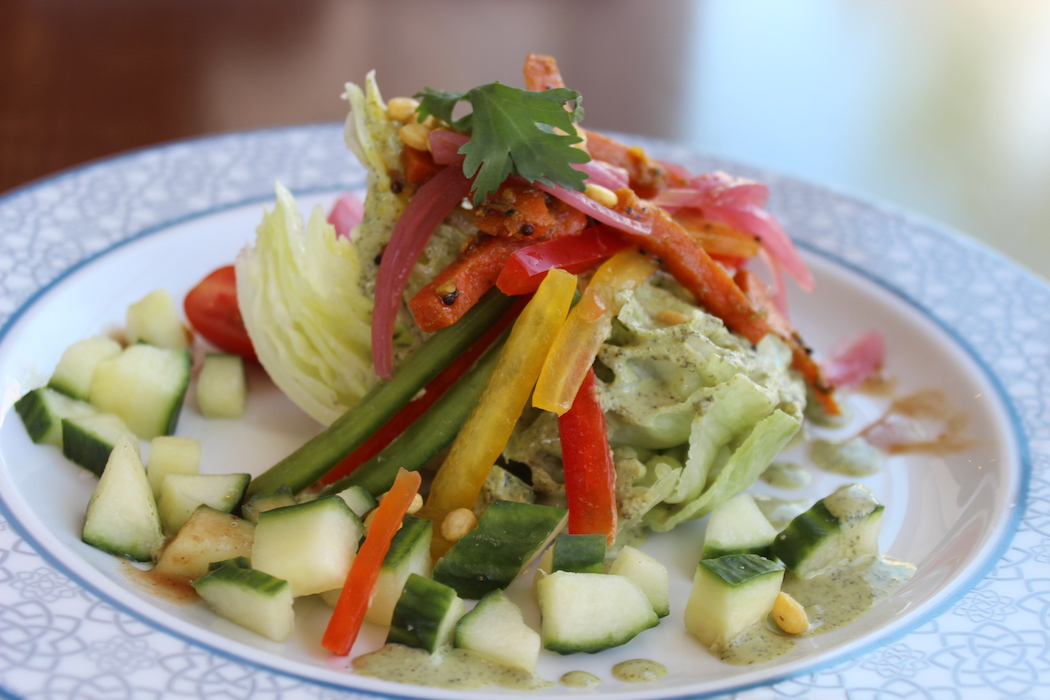
After the fired bhaji came some fresh crunch with an iceberg lettuce salad with cilantro and lime infused take on green goddess dressing and hard lentils. If bhaji was more or less faithful interpretation of a Pakistani-Indian classic, this was an instance of a North American dish given a dash of Eastern flavour. It worked, and embodies what’s happening at Diwan. Here’s a dish that acknowledges the museum’s mission of telling the story of Islamic culture while recognizing it’s place in big North American city.
Grilled Octopus with Aleppo Pepper Aïoli
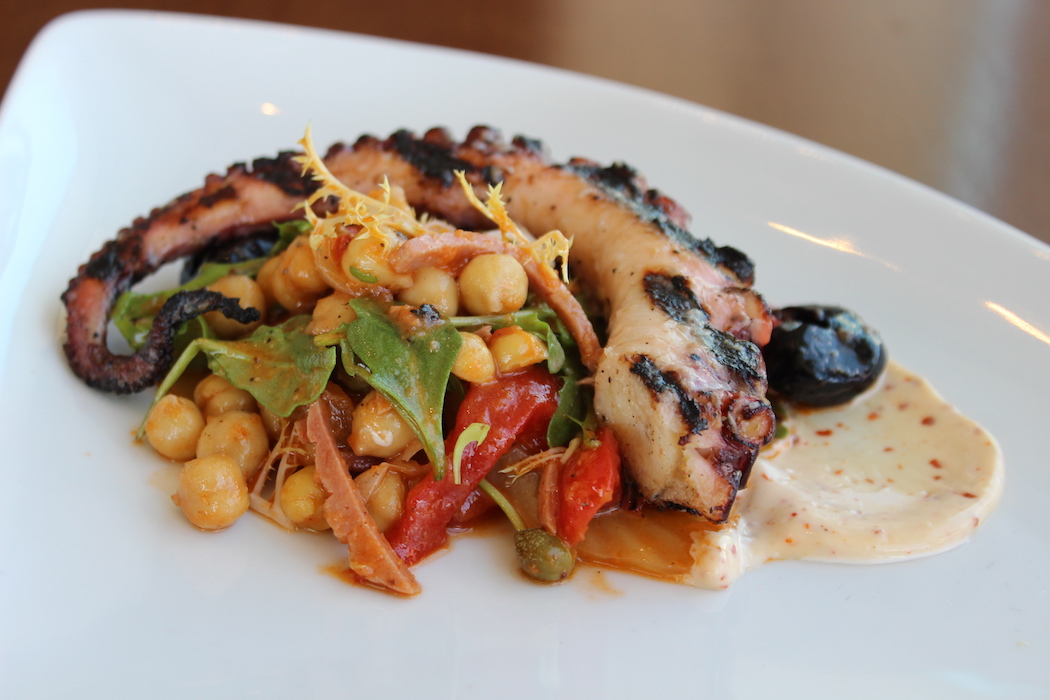 Next up: perfectly tender grilled tentacle of octopus on a very Mediterranean warm salad of chickpea, arugula, olives, peppers and capers. Kovac admitted that this is an adaptation of a dish he cooked at Fabrica, from where he came prior to Diwan, and he added the Aleppo peppers to shift its profile subtly to the Levant. Again, it works, and came in just the right portion for a light business lunch.
Next up: perfectly tender grilled tentacle of octopus on a very Mediterranean warm salad of chickpea, arugula, olives, peppers and capers. Kovac admitted that this is an adaptation of a dish he cooked at Fabrica, from where he came prior to Diwan, and he added the Aleppo peppers to shift its profile subtly to the Levant. Again, it works, and came in just the right portion for a light business lunch.
Grilled Lamb Burger with Sumac Fries
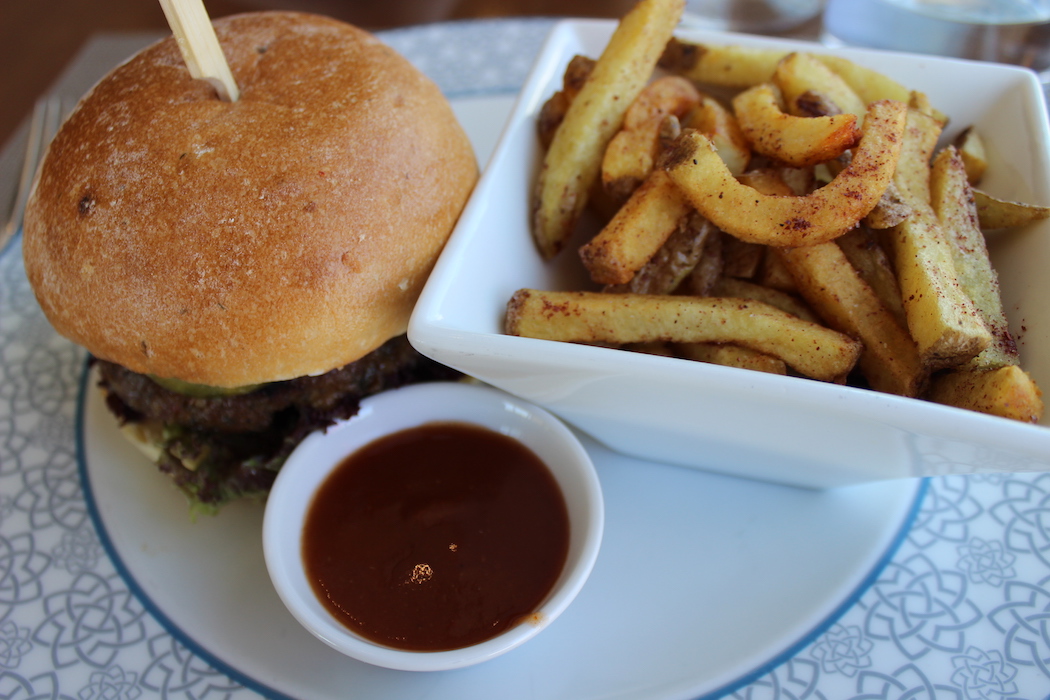
Diwan’s burger is not a typical pub burger. Kovac grinds his lamb twice so the patty is more like a kofta with pleasingly springy mouthfeel. Into the ground lamb go mix of Eastern spices and on top freshly pickled cucumber rounds, as well tomato and lettuce. It’s dressed with a whipped feta, caramelized onion aïoli. The effect gets into shawarma-kebab territory (in a really good way). The sumac dusted fries come with a tamarind ketchup, which is less sweet than sour and interestingly savoury with umami.
After lunch, I spoke with John Kovac, who told me he’s really enjoying being at the Aga Khan Museum. Although he doesn’t live far away, he’s discovered the spice shops in neighbouring Thorncliff Park and his menu and clientele have got him excited about the cuisines from the Islamic world. That world, he reminded me stretches from North Africa to India, which gives him great freedom. At the same time he brings the McEwan group’s fresh from scratch ethos and kitchen discipline.
Kovac hopes that Diwan’s big patio and upcoming Summerlicious promotion will attract new diners from both the Islamic community and everyone else interested in something a little different for lunch. Judging by the busy dining room, this may already be happening.
 Malcolm Jolley is a founding editor of Good Food Revolution and Executive Director of Good Food Media, the company that publishes it. Follow him on Twitter or Facebook.
Malcolm Jolley is a founding editor of Good Food Revolution and Executive Director of Good Food Media, the company that publishes it. Follow him on Twitter or Facebook.

